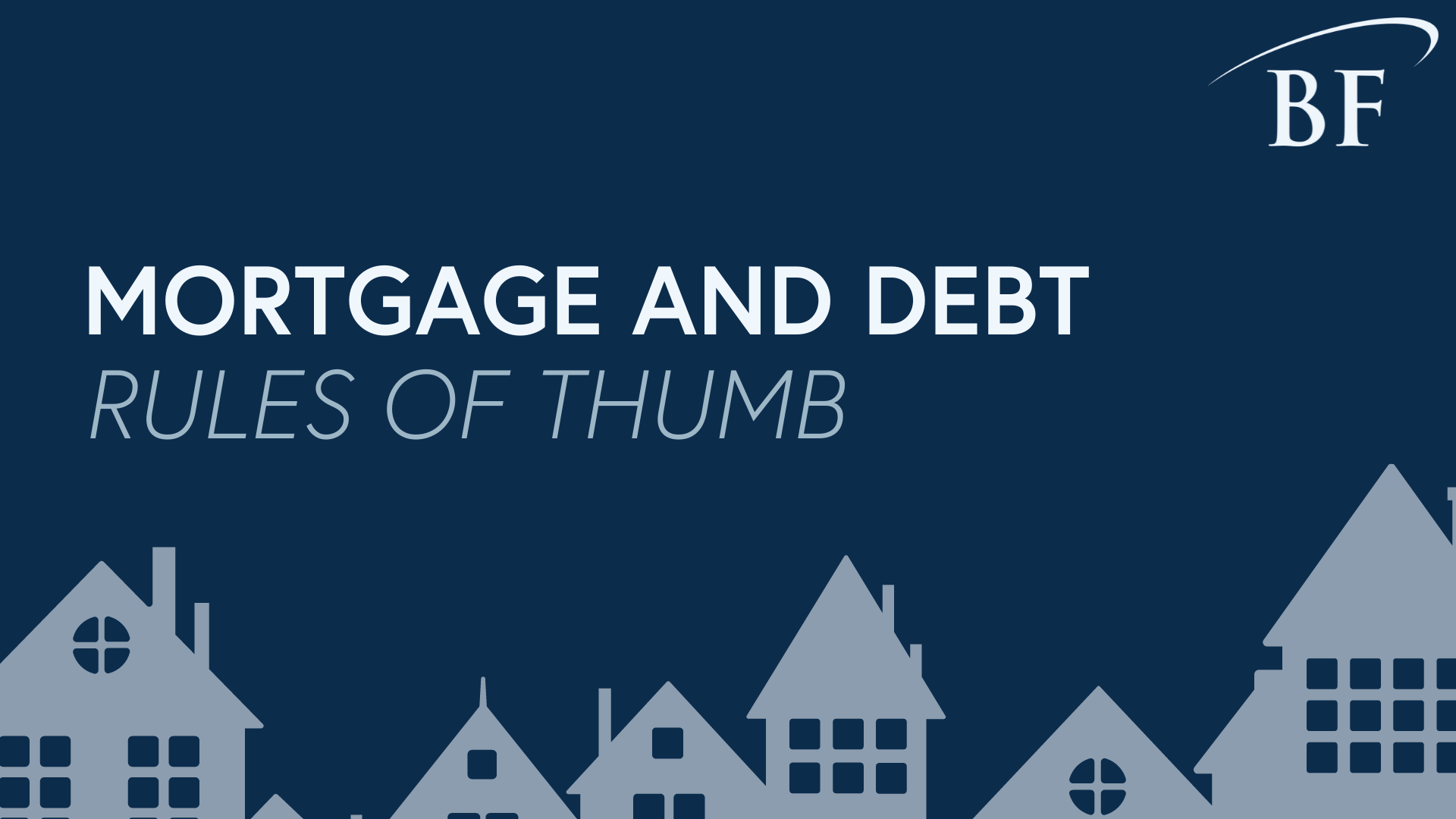Presented by Robert C. Blakely
Most people carry some debt, whether a student loan, a mortgage, or a car loan. Indeed, making large purchases using someone else’s money is often a smart financial move. Borrowing is convenient, allowing you to purchase big-ticket items with less out-of-pocket cash. And, with today’s attractive interest rates, it’s a relatively low cost. But taking on any amount of debt comes with risk. A financial setback can reduce your ability to repay a loan, and any amount of debt may prevent you from taking advantage of other financial opportunities.
How Much Debt Can You Afford to Take On?
When analyzing your ability to carry debt, take a close look at your personal finances, focusing on the following factors:
Liquidity. If you suddenly lost your job, would you have enough cash at the ready to cover your current liabilities? It’s a good idea to maintain an emergency fund to cover three to six months’ worth of expenses. But don’t go overboard. Guard against keeping more than 120 percent of your six-month expense estimate in low-yielding investments. And don’t let more than 5 percent of your cash reserves sit in a non-interest-bearing checking account.
Current debt. Your total contractual monthly debt payments (i.e., the minimum required payments) should come to no more than 36 percent of your monthly gross income. In addition, the amount of consumer debt you carry—credit card balances, automobile loans, leases, and debt related to other lifestyle purchases—should amount to less than 10 percent of your monthly gross income. If your consumer debt ratio is 20 percent or more, avoid taking on additional debt.
Housing expenses. As a general rule, your monthly housing costs—including your mortgage or rent, home insurance, real estate taxes, association fees, and other required expenses—shouldn’t amount to more than 31 percent of your monthly gross income. However, if you’re shopping for a mortgage, consider that lenders use their own formulas to calculate how much home you can afford based on your gross monthly income, current housing expenses, and other long-term debt, such as auto and student loans. For example, for a mortgage insured by the Federal Housing Administration, your housing expenses and long-term debt should not exceed 43 percent of your monthly gross income.
Savings. Although the standard recommended savings rate is 10 percent of gross income, your guideline should depend on your age, goals, and stage of life. For example, you should save more as you age, and as retirement nears, you may need to ramp up your savings to 20 percent or 30 percent of your income. Direct deposits, automatic contributions to retirement accounts, and electronic transfers from checking accounts to savings accounts can help you make saving a habit.
Evaluating Mortgage Options
If you’re in the market for a new home, the myriad of mortgage choices can be overwhelming. Fixed or variable interest rate? Fifteen- or thirty-year term? If it were merely a question of which mortgage provided the lowest long-term costs, the answer would be simple. But, in reality, the best mortgage for a particular household depends on how long the homeowner plans to stay in the house, the available down payment, the predictability of cash flow, and the borrower’s tolerance for fluctuating payments.
How long will you be there? One rule of thumb is to choose a mortgage based on how long you plan to stay in the home. If you plan to stay 5 years or less, consider renting. If you plan to live in the house for 5 to 10 years and have a high tolerance for fluctuating payments, consider a variable-rate mortgage for a longer-term, such as 30 years, to help keep the cost down. If the home is a long-term investment, choose a fixed-rate mortgage with a shorter term, such as 15 or 20 years.
Is a variable-rate mortgage worth the risk? Because the monthly payments are typically lower with variable-rate mortgages, they are generally the easiest to qualify for—and may enable you to purchase a more expensive home.
Variable-rate mortgages also allow you to take advantage of falling interest rates without the cost of refinancing. But keep in mind that it’s generally not wise to take on a variable-rate mortgage simply because you qualify for one. Although these mortgages offer the lowest interest rate, they’re also the riskiest, as the monthly payment can increase to an amount that may prove difficult to meet. Again, selecting a shorter loan term, such as 15 years, can help lessen this risk.
Remember, when it comes to taking on debt, the loan amount you qualify for and the amount you can comfortably afford to repay may not be the same. So be sure to consider your special circumstances before taking on debt to buy a home or make another major purchase. For more tips on homeownership, please read our article on Five Tips When Shopping for a Mortgage.
This material has been provided for general informational purposes only and does not constitute either tax or legal advice. Although we go to great lengths to ensure our information is accurate and useful, we recommend you consult a tax preparer, professional tax advisor, or lawyer.
Engage with the entire Blakely Financial team at WWW.BLAKELYFINANCIAL.COM to see what other expert advice we can provide towards your financial well-being.
ROBERT BLAKELY, CFP® is a financial advisor with BLAKELY FINANCIAL, INC. located at 1022 Hutton Ln., Suite 109, High Point, NC 27262. He is the founder and president of Blakely Financial, Inc.
Blakely Financial, Inc. is an independent financial planning and investment management firm that provides clarity, insight, and guidance to help our clients attain their financial goals.
Securities and advisory services offered through Commonwealth Financial Network, Member FINRA/SIPC, a Registered Investment Adviser.
Diversification and asset allocation programs do not assure a profit or protect against loss in declining markets, and cannot guarantee that any objective or goal will be achieved.

